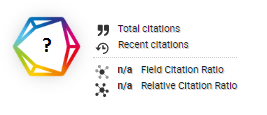MODEL ANALISIS PERILAKU PENGGUNA TERHADAP TEKNOLOGI TELEMEDICINE DI INDONESIA
DOI:
https://doi.org/10.46984/sebatik.v27i1.2156Keywords:
Telemedicine, User Behavior, End-User Computing Satisfaction, Model Analisis, SEM.Abstract
Pandemi Covid-19 memberikan dampak di berbagai kehidupan manusia, termasuk kepada perkembangan teknologi dan informasi. Dunia Kesehatan turut bertransformasi dengan semakin berkembangnya teknologi dalam bidang Kesehatan. Teknologi ini berkembang pesat dan berdampak sangat positif. Salah satu inovasi bidang Kesehatan adalah telemedicine. Telemedicine merupakan aplikasi kesehatan berbasis digital. Meskipun saat ini pandemi Covid-19 sudah mulai mereda, kehadiran Telemedicine telah menjadi budaya baru dan sangat mengoptimalkan kebutuhan pelayanan kesehatan masyarakat. Meski demikian, beberapa aplikasi Telemedicine perlu ditelaah lebih lanjut agar penggunaannya lebih optimal. Oleh sebab itu, diperlukan evaluasi untuk menganalisis faktor apa sajakah yang dapat mempengaruhi perspektif pengguna sehingga dapat memanfaatkan teknologi Telemedicine dengan optimal. Sampling teknologi yang digunakan dalam penelitian ini adalah aplikasi Halodoc dan Alodokter. Data penelitian dihimpun dengan metode kuantitatif dengan cara penyebaran kuesioner kepada pengguna aplikasi Telemedicine. Kuesioner disebarkan secara daring dengan komponen pertanyaan yang tersusun sistematis sesuai model yang diterapkan. Penulis menggunakan Structural Equation Model (SEM) dengan memanfaatkan tools SmartPLS. Hasil penelitian ini menunjukkan bahwa variabel Content dan Accuracy berpengaruh signifikan terhadap kepuasan pengguna dalam aplikasi kesehatan Halodoc, sedangkan variabel Format, Ease of Use, Timeliness tidak berpengaruh signifikan terhadap kepuasan pengguna dalam aplikasi kesehatan Halodoc. Metode yang digunakan pada penelitian ini adalah End-User Computing Satisfaction (EUCS). Penggunaan metode EUCS terdiri atas lima variabel bebas yaitu isi, bentuk, keakuratan, kemudahan penggunaan, ketepatan waktu, dan kepuasan pengguna.
References
Anggito, A., & Setiawan, J. (2018). Metodologi penelitian kualitatif. CV Jejak (Jejak Publisher).
Asbari, M., Santoso, P. B., & Purwanto, A. (2019). Pengaruh kepemimpinan dan budaya organisasi terhadap perilaku kerja inovatif pada industri 4.0. JIM UPB (Jurnal Ilmiah Manajemen Universitas Putera Batam), 8(1), 7-15.
Azizah, A. H. (2018). Analisis Faktor Kepercayaan Terhadap Teknologi Pada Keinginan Masyarakat Dalam Mengadopsi E-Voting. Jurnal Ilmiah Teknologi Infomasi Terapan, 4(2).
Azizah, A. H., Fauzi, R., & Alam, P. F. (2020, November). Discovering the Impact of ERP (Enterprise Resource Planning) Adoption toward Employee Performance. In Proceedings of the First International Conference of Science, Engineering and Technology (p. 231).
Azizah, A. H., Sandfreni, S. and Ulum, M. B. (2021) “Analisis Efektivitas Penggunaan Portal Resmi Merdeka Belajar Kampus Merdeka Menggunakan Model Delone And Mclean”, Sebatik, 25(2), pp. 303-310
Dias, C., Ferreira, A., Romão Pereira, A., & Fonseca, A. M. (2019). Examining the relationship between perceived service quality, satisfaction, and renewal intention in Portuguese fitness centers. Revista de psicología del deporte, 28(2), 0049-58.
Drake, C., Lian, T., Cameron, B., Medynskaya, K., Bosworth, H. B., & Shah, K. (2022). Understanding Telemedicine’s “new Normal”: Variations in Telemedicine Use by Specialty Line and Patient Demographics. Telemedicine and E-Health, 28(1), 51–59. https://doi.org/10.1089/tmj.2021.0041
Fitriana, D. E. N., Miarsyah, M., & Rusdi, R. (2019). The Effect of Motivation on Pro Environmental Behavior (PEB) on Senior High School Student. IJEEM-Indonesian Journal of Environmental Education and Management, 4(1), 74-81.
Fitriansyah, A., & Harris, I. (2018). Penerapan dimensi EUCS (End User Computing Satisfaction) untuk mengevaluasi tingkat kepuasan pengguna situs web. Konferensi Nasional Sistem Informasi (KNSI) 2018.
Hamnvik, O. P. R., Agarwal, S., AhnAllen, C. G., Goldman, A. L., & Reisner, S. L. (2022). Telemedicine and inequities in health care access: the example of transgender health. Transgender Health, 7(2), 113-116.
Kusyana, D. N. B., Purwaningrat, P. A., & Sunny, M. P. (2020). Peran Kualitas Layanan Dalam Menciptakan Loyalitas Mahasiswa. Widya Manajemen, 2(1), 10-27.
Martini, I. A. O., & Sarmawa, I. W. G. (2019). The Role of the Employee Work Motivation in Mediating the Work Culture towards Their Performance. Jurnal Ekonomi & Bisnis JAGADITHA, 6(1), 15-21.
Nugroho, E. (2018). Prinsip-prinsip menyusun kuesioner. Universitas Brawijaya Press.
Nursofwa, R. F., Sukur, M. H., & Kurniadi, B. K. (2020). Penanganan Pelayanan Kesehatan Di Masa Pandemi Covid-19 Dalam Perspektif Hukum Kesehatan. Inicio Legis, 1(1).
Patel, S. Y., Mehrotra, A., Huskamp, H. A., Uscher-Pines, L., Ganguli, I., & Barnett, M. L. (2021). Trends in outpatient care delivery and telemedicine during the COVID-19 pandemic in the US. JAMA internal medicine, 181(3), 388-391.
Powers, M. A., Bardsley, J. K., Cypress, M., Funnell, M. M., Harms, D., Hess-Fischl, A., ... & Uelmen, S. (2020). Diabetes self-management education and support in adults with type 2 diabetes: a consensus report of the American Diabetes Association, the Association of Diabetes Care & Education Specialists, the Academy of Nutrition and Dietetics, the American Academy of Family Physicians, the American Academy of PAs, the American Association of Nurse Practitioners, and the American Pharmacists Association. Diabetes Care, 43(7), 1636-1649.
Shabbir, A., Malik, S. A., & Janjua, S. Y. (2017). Equating the expected and perceived service quality: A comparison between public and private healthcare service providers. International Journal of Quality & Reliability Management.
Sholihin, M., & Ratmono, D. (2021). Analisis SEM-PLS dengan WarpPLS 7.0 untuk hubungan nonlinier dalam penelitian sosial dan bisnis. Penerbit Andi.
Talib, F., Asjad, M., Attri, R., Siddiquee, A. N., & Khan, Z. A. (2019). Ranking model of total quality management enablers in healthcare establishments using the best-worst method. The TQM Journal.
Tarigan, Z. J. H., & KRISTIANTO, I. (2019). The impact TQM System on Supply Chain Performance through Supply Chain Integration and Employee Satisfaction. International Journal of Business Studies, 2(1), 8-17.
Valdez, D., Montenegro, M. S., Crawford, B. L., Turner, R. C., Lo, W. J., & Jozkowski, K. N. (2021). Translation frameworks and questionnaire design approaches as a component of health research and practice: A discussion and taxonomy of popular translation frameworks and questionnaire design approaches. Social Science & Medicine, 278, 113931.
Vosburg, R. W., & Robinson, K. A. (2022). Telemedicine in primary care during the COVID-19 pandemic: provider and patient satisfaction examined. Telemedicine and e-Health, 28(2), 167-175. https://doi.org/10.1089/tmj.2021.0174
Yudistira, A., & Novita, D. (2022). Analisis Kepuasan Pengguna Aplikasi Arsip Digital Menggunakan Model End User Computing Satisfaction (EUCS). Jurnal Teknologi Sistem Informasi, 3(2), 176-188.
Zhu, Y. Q., Azizah, A. H., & Hsiao, B. (2021). Examining multi-dimensional trust of technology in citizens’ adoption of e-voting in developing countries. Information Development, 37(2), 193-208.
Downloads
Published
How to Cite
Issue
Section
License
Authors retain all their rights to the published works, such as (but not limited to) the following rights; Copyright and other proprietary rights relating to the article, such as patent rights, The right to use the substance of the article in own future works, including lectures and books, The right to reproduce the article for own purposes, The right to self-archive the article








